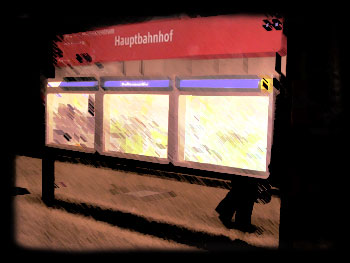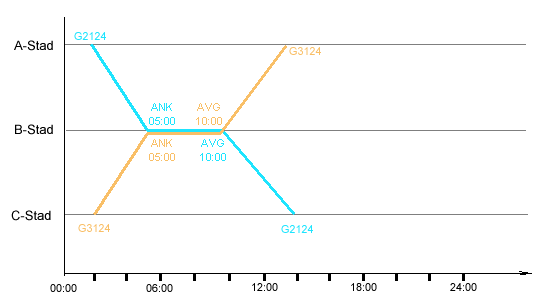| - MRR TUTORIALS - OPERATIONS - TIME TABLES |
Timetables
The time table can be the back bone in the operations of a Model Railroad,
but on it´s own not much help in the miniature world.
My experience with model railways and timetables is not very good. They are quite fun to figure out and make, but then driving according to them gives no extra "kick" I think. On the contrary! Most stressful, quite complicated and totally meaningless. But! In combination with another type of operation, such as waybill and carcards, the timetable can be like the glue that makes the system work. So .. Think of the timetable as a tool, not a way to operate the layout.
What is then the problem with timetables on a Model Railroad?
There are some simple reasons why timetables do not work so well on a model railroad

1) The length of the lines in between stations and stops on a model railway is almost never to scale. This means that it is much faster for a model train to travel between the stations, even if you are driving at scale speed, than it would in "reality". That makes it impossible to keep up with the switching (shunting) at the stations and in the yards. It just becomes very stressful.
2) I personally prefer watching the trains rather than looking at my clock to keep track of departure times for the trains.
3) Operating a model railway can be engaging, but should never become stressful I think!
Graphic timetable + Train order - Best in test!
A simple graphical timetable and a train arrangement for each station therefore work best in most cases. In addition, the simplest solution is usually to ignore what time it is, but instead see the timetable as a sequence of trains to be run in turn.
This is how a simple graphical timetable is made
A simple graphical timetable is a simple and great tool for the driver. It shows the train's route between the different destinations, where train meetings will take place and at the same time gives an overview of other trains during the day of traffic. We draw a diagram where the destinations are marked on the Y axis and 24 hours a day along the X axis. The different trains are drawn as dashes, preferably in different colors, which go from destination to destination. Each line can be supplemented by train numbers.

Here we can see that G2124 is a freight train. The train has an even number and then it is southbound.
The train arrives in B-town at 05:00 and there is a train meeting with the other train in the pair of trains, namely G3124. At 10:00 the train will depart towards C-city where it arrives at 14:00.
Train order list
If you have station staff you can, in addition to the timetable, make a train arrangement for each station. In this example we write 3st, one for A-city, one for B-city, etc. The train order list indicates whether, for example, sleeping cars should be switched into the train, or change of locomotive etc.